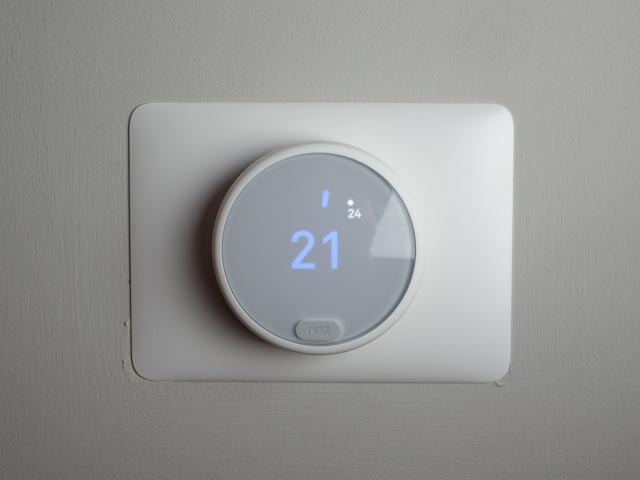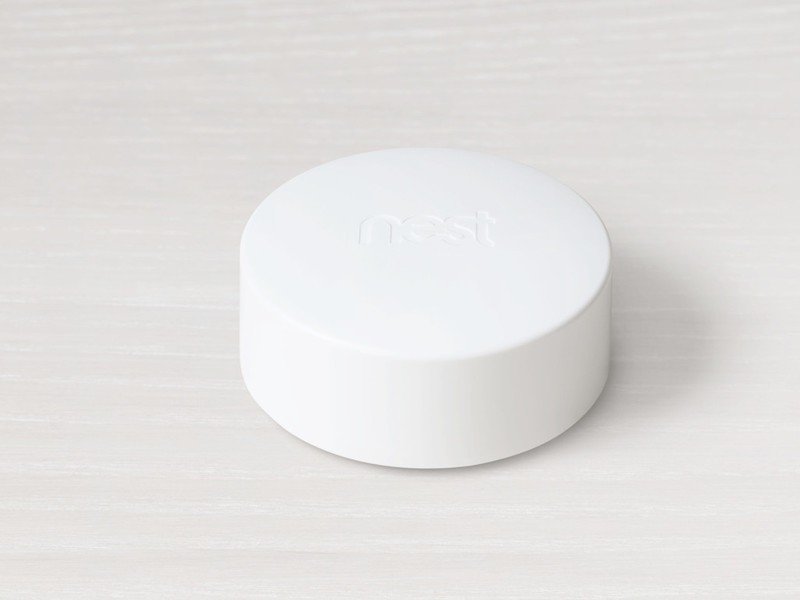10 Things You Need To Know About Nest Temperature Sensors

What you need to know about Nest's Temperature Sensor before you buy.
It's not the same temperature in every room of your house. A room without windows might be warmer or cooler than a room with them, rooms downstairs might be cooler in the summertime, and we all know how hot the kitchen can get when you're cooking a big meal. This makes it hard for your thermostat to make your whole house the temperature you want.
This is why Nest makes a remote Temperature Sensor. Most homes don't have multiple systems to heat or cool them so using multiple thermostats isn't going to work out very well, but a remote sensor that can tell your thermostat to ramp up the air conditioner for a little bit because it's kind of warm in the den. The key is knowing what you need and how to use it.
Here are 10 important things you need to know about Nest's Temperature Sensors.

When should I use one?
Even if you have a multi-story house that has warm or cold spots, you might not want to use a Temperature Sensor. It all depends on where you spend your time and where the main thermostat is.
If you spend most of your time in a spot that's too warm or too cold you can put a Temperature Sensor in the room so your Nest knows it needs to adjust. If you're comfortable where you spend most of the time but another spot in your house gets too warm or too cold, you won't want one. You can't easily move your thermostat, but if you wish you could, a Temperature Sensor is probably for you.
Be an expert in 5 minutes
Get the latest news from Android Central, your trusted companion in the world of Android
Do I have to have a Nest Thermostat to use one?
Yes. Nest Temperature Sensors are not stand-alone products nor do they work with other brands of thermostat. They're basic thermometers that are hard-coded to talk to your Nest, and only your Nest.
Which Nest Thermostats support Temperature Sensors?
Temperature Sensors only work with these models:
- Nest Learning Thermostat, 3rd generation
- Nest Thermostat E
Nest vs. Nest E: Which one is for you?
The Nest app will tell you which model you have under Technical info.
- Open the Nest app
- Choose your thermostat on the app's home screen
- Tap the Settings icon in the top right corner
- Tap Technical info
The first digit of the Display model number tells you which model you have. 1 is a first generation Nest, 2 is a second generation, 3 is a third generation, and 4 is a Nest Thermostat E. You can also look at the box it came in if you still have it. Look at the first two numbers of the Serial Number. 01 is a first generation Nest, 02 is a second generation, 09 is a third generation, and 15 is a Nest Thermostat E.
More: Nest Thermostat Gen 1 through Gen 3 and Nest E: Comparison and main differences
Do I need any wires?
Nope! The Nest Temperature Sensor connects to your Nest using Bluetooth and has a range up to 15 meters (about 50 feet). That measurement is in a straight line that can go through walls or floors so you'll probably be good unless you have a very large house. Sometimes house wiring can monkey with Bluetooth and shorten its range, but those issues are relatively rare.
How many Temperature Sensors can I use?
You can have up to six Temperature Sensors in the same house running from the same Nest Thermostat. If you do have multiple Nest Thermostats in one home, that means you can have 18 Temperature Sensors.
Can I use a different temperature sensor with my Nest?
Nest Thermostats will only work with Nest branded Temperature Sensors.
Can I check the temperature on all my sensors in the Nest app?
Yes. When you tap on a thermostat in the app you'll see all the sensors attached along with the current temperature of each and some information about how much warmer or cooler that usually are compared to your Nest Thermostat. This information can be helpful; it lets you know if you should move the Temperature Sensor to a different spot.
Do I need to plug it in?
No. A Nest Temperature Sensor is powered by a small Cr Lithium coin battery. They last a long time and are easy to change.
Do the Temperature Sensors know when I'm in the room?
No. There are no sensing abilities or motion detectors in the Temperature Sensors. They are designed to only read the temperature and let the main thermostat know what the reading is. They won't affect any smart sensing your Nest Thermostat might be set up to do in any way.
Will using one save me money?
Probably not. In fact it will probably cost a little more to heat and cool your home when you use one. Remote Temperature Sensors are designed to keep you comfortable in the room they are in, which means they might have to run the heating and cooling system a little more often.
A Nest Temperature Sensor isn't something everyone needs. But if you do need one, they are simple to set up and easy to use. And best of all, they're not going to break your wallet at only $40.

Jerry is an amateur woodworker and struggling shade tree mechanic. There's nothing he can't take apart, but many things he can't reassemble. You'll find him writing and speaking his loud opinion on Android Central and occasionally on Threads.
